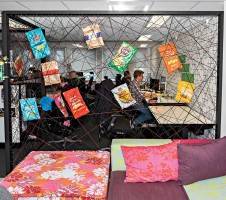June 21, 2016
Tech unicorns thrive in Europe and UK leads the way, claims report 0
 Fortune magazine begs to differ, but Europe as a whole is a seemingly fertile breeding ground for ‘tech unicorns’, according to a new report from technology investment bank GP Bullhound. Defined as technology startups with a market valuation of more than $1 billion, the report claims that there are now 47 so-called unicorns in Europe, up by 10 from last year. The report also claims that the UK is leading the way within Europe, with 18 out of the 47 based in the country with new entries such as Blippar and Anaplan. The European firms have a combined value of $130bn, and ‘have demonstrated resilience in the face of turbulent global markets and heightened scrutiny of fast-growth tech’. Sweden is the country with the second highest number of billion-dollar tech companies (7), including Spotify (pictured), Europe’s most valuable Unicorn. Germany is third with six and France with three. Oddly, the report also includes Israel which has three unicorns.
Fortune magazine begs to differ, but Europe as a whole is a seemingly fertile breeding ground for ‘tech unicorns’, according to a new report from technology investment bank GP Bullhound. Defined as technology startups with a market valuation of more than $1 billion, the report claims that there are now 47 so-called unicorns in Europe, up by 10 from last year. The report also claims that the UK is leading the way within Europe, with 18 out of the 47 based in the country with new entries such as Blippar and Anaplan. The European firms have a combined value of $130bn, and ‘have demonstrated resilience in the face of turbulent global markets and heightened scrutiny of fast-growth tech’. Sweden is the country with the second highest number of billion-dollar tech companies (7), including Spotify (pictured), Europe’s most valuable Unicorn. Germany is third with six and France with three. Oddly, the report also includes Israel which has three unicorns.


































June 18, 2016
Productive workplaces + Long hours link to ill health + Coworking rise 0
by Sara Bean • Cities, Comment, Environment, Facilities management, Flexible working, Furniture, Newsletter, Technology, Wellbeing, Workplace